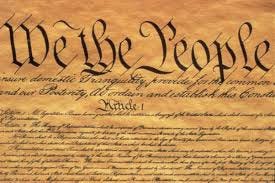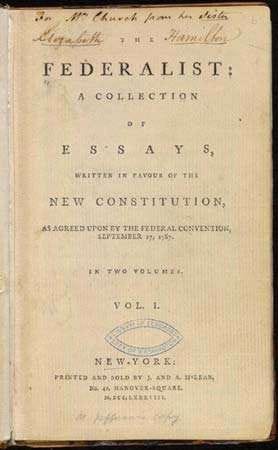The Constitution is THE Law of the USA
Introduction to this Series
I am a retired educator of all grades from Pre-K through university, but the majority of my public school teaching experience was with middle and high school students. I primarily taught English, Language Arts, History, and Government.
I am not a lawyer, nor do I play one on TV, but my interest in politics and the Constitution began when I was a child: 1) From the age of 5 when my grandmother dragged me with her block after block to register people to vote, and 2) when my 5th-grade class was assigned to memorize and recite the “Preamble to the Constitution.”
In today’s political climate, I have found that many people do not have a clear understanding of the Constitution of the United States, and this collective ignorance is detrimental to our representative democracy.
My goal in writing this series is to help people to understand the Constitution at a layman’s level. The Constitution is the only document that is the law of the land. The United States of America is a republic and a representative democracy. There are powers in the Constitution that belong to the Federal Government and there are powers in the Constitution that belong to the States. This combination is most likely unique to our Country.
I look forward to your fact-based and constructive comments on this story.
The History of the United States Constitution
The first written constitution was the Articles of Confederation, which was in effect from 1781 through 1789. By 1787, the Founders realized that there were many problems with the Articles of Confederation, and met in the summer in Philadelphia, Pennsylvania to amend the Articles, which said that the legislatures of each state should be exactly the same.
At the time, there were no European models of government that the Founders wanted to emulate. In particular, they did not want a monarchy nor a military-based form of government. Ironically, the most democratic forms of government that any member of the Constitutional Convention was familiar with were those of the Native American Nations, and most particularly the Iroquois Confederacy.
Founder John Adams wrote a three-journal handbook that surveyed for the convention surveying different types of governments and ideas about government. It included European philosophers like John Locke and Montesquieu, but it also included the Iroquois Confederacy and other Indigenous governments.
The Native American influence on the writing of the new constitution is rarely taught in American history classes, however, it was the only actual example of some of the federalism concepts that the Founders were considering adopting, even as many of them, including Benjamin Franklin, personally considered all indigenous peoples as “ignorant savages”.
In 1722, six indigenous nations: the Mohawks, the Onondaga, the Cayuga, the Oneida, the Seneca, and the Iroquois formed a multi-state government that also maintained individual governance for each nation. Because of the natural and national bias against the Native Americans, it was not until 1988 that Congress passed a bill written by the late Senator Daniel Inouye of Hawai’i that formally acknowledged the influence of the Iroquois Confederacy on the framing of the United States Constitution. This Congressional declaration also formally recognized the legitimacy and sovereignty of the Native American nations and their respective governments.
There were many areas of disagreement between the Northern States and the Southern States, and between large States and small States, including issues such as states’ rights, representation, and slavery. The Northern states wanted to abolish slavery totally, while the Southern states not only wanted to keep slavery, but to count their slaves in their representation numbers, and threatened to leave the convention altogether.
Finally, the delegation from Connecticut brought forward a proposal that came to be known as the “Great Compromise.” There were several levels to complete in this proposal to become the law of the land:
Creation of a bicameral (two-part) federal legislation that included the Senate with equal representation for all states, and the House of Representatives, where representation would be apportioned on the number of each state’s free population plus three-fifths of its enslaved population. (The inclusion of slaves came to be known as the “Three-Fifths Compromise.”) Additionally, Congress would not be allowed to ban the importation of enslaved people until 1808.
The new Constitution was signed by the 39 delegates to the Constitutional Convention on September 17, 1787, and on September 28, the document was submitted to the 13 states for ratification.
In 1787 and 1788, Alexander Hamilton, John Jay, and James Madison worked hard to convince the New York delegation to ratify the Constitution and published a series of essays explaining the Constitution and the republican type of government. These essays in defense of the Constitution came to be known as “The Federalist Papers.”
Finally, in June 1788, after nine of the states had ratified the Constitution, the new Congress set March 4, 1789, as the date for the new government to go forward.
Meanwhile, it was immediately recognized that many changes and additions needed to be added to the original document. Twelve amendments, collectively called the “Bill of Rights,” were proposed to Congress, which eventually adopted ten of them on December 15, 1791.
Three Co-Equal Branches of Government and Checks and Balances
The Founders and Framers of the Constitution all had experience living under a monarchy and were determined to form a government that balanced state and federal powers with individual liberties. They also found that the original Articles of Confederation did not include federal powers for direct taxation and the regulation of interstate commerce, among others. The new Constitution was designed to remedy these exclusions.
The separation of powers between the three branches of the new government and a balance between a governmental authority and individual liberties are the basis for our representative democracy and the foundation of the American constitutional law.
Watch This Space
Over the next year, approximately every two weeks, I will publish an essay on each of the seven articles of the original Constitution and each of the subsequent twenty-seven amendments passed by Congress and ratified by 2/3 of the states since 1791.
About Me
I am a native Detroiter, a wife, mother, grandmother, and homeowner, and I am recently semi-retired and loving it. I would love for you to follow me on my Facebook and on my Instagram pages. Any opinions expressed in this publication are my own.
I invite you to read the stories in my publications: Pam’s Passions, Your Business Your Brand Creatively, and Detroit Ink Publishing.
Do you want to keep up with upcoming projects and products for creative and solo professionals? Sign up to Keep Up with the TeamOwens313 Creative Club via email.






